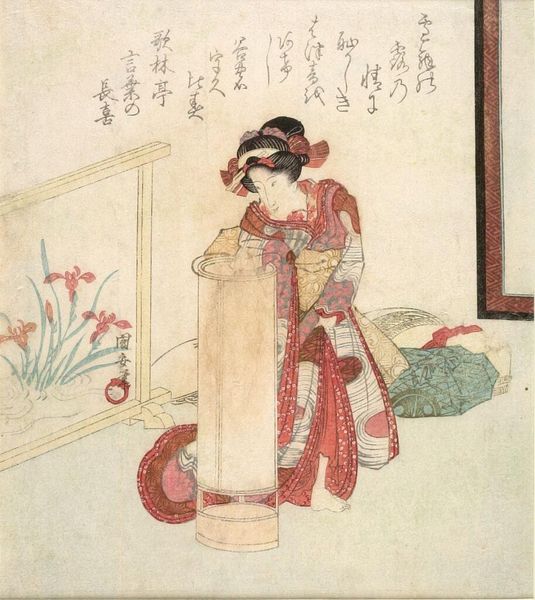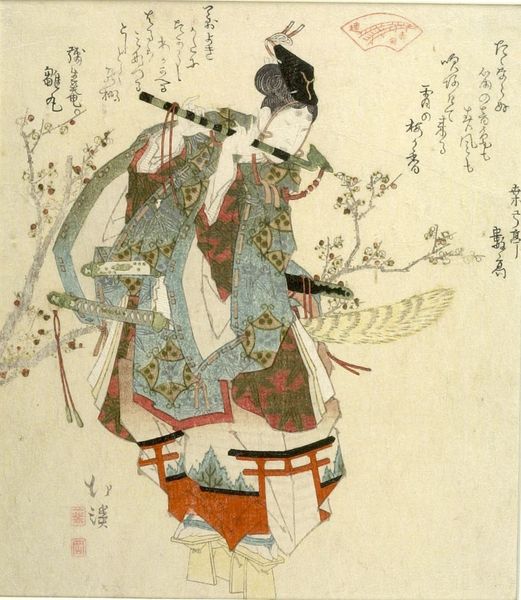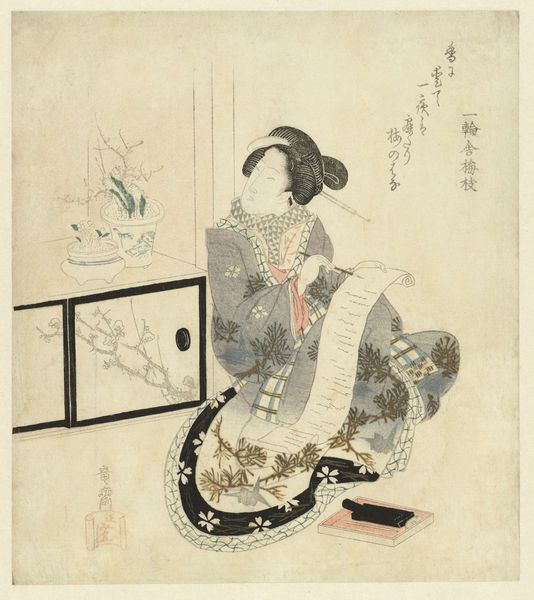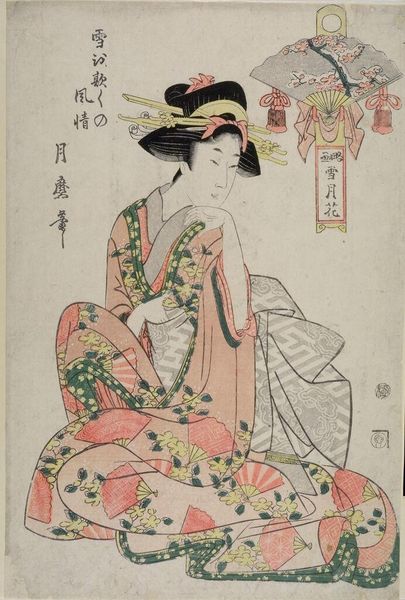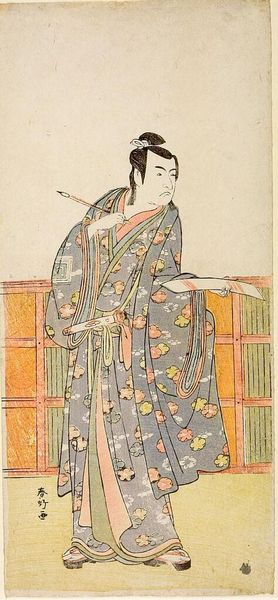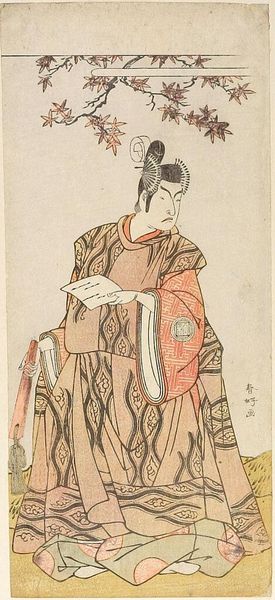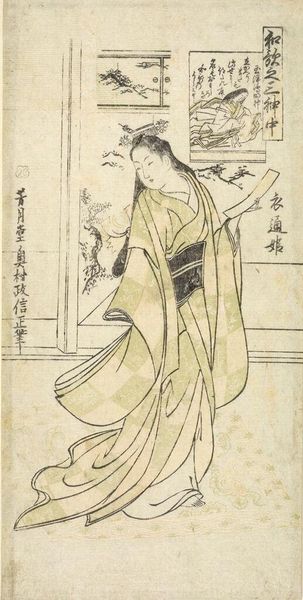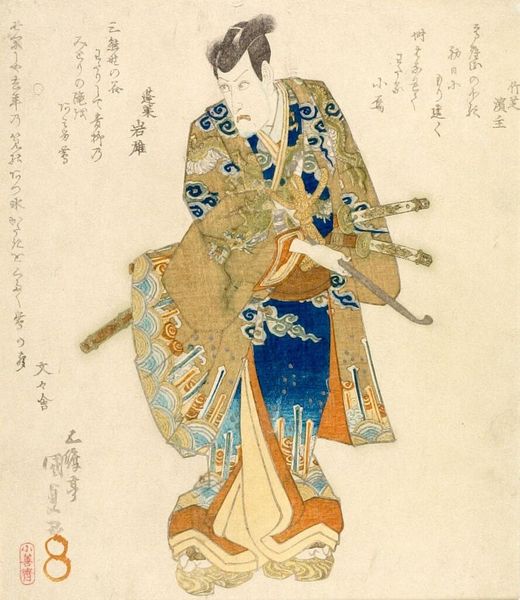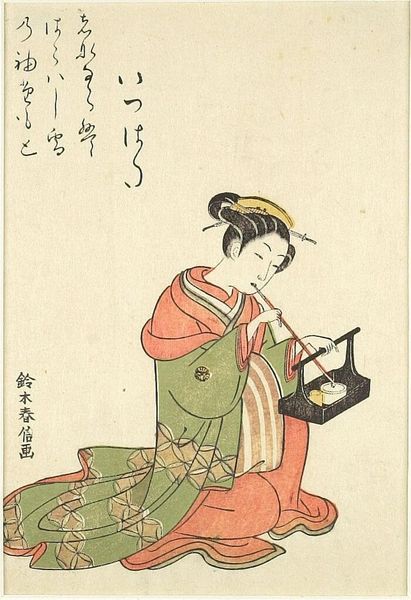
painting, watercolor
#
portrait
#
water colours
#
narrative-art
#
painting
#
asian-art
#
figuration
#
watercolor
#
historical fashion
#
watercolour illustration
#
watercolor
Copyright: Public domain
Editor: This watercolour painting is called "Xue Tao," and is by Qiu Ying. It presents a demure figure in historical dress, absorbed in reading a scroll. What catches my eye is the way the artist depicts the figure in such detail, against what looks like an empty, or at least less detailed background. How do you interpret this work? Curator: The lack of background is a clever void, inviting viewers to project their own narrative and context onto Xue Tao. It amplifies the cultural weight of this figure, who was a celebrated poet of the Tang Dynasty. The scroll in her hand becomes a potent symbol of her intellectual prowess and the legacy of women writers. The elaborate robes and adornments can tell us much. Editor: That's fascinating. What do the robes communicate beyond just status? Curator: Look closer at the colours: soft pinks, jade greens, with flowing ribbons. These aren't merely decorative; they suggest refined taste and cultural affiliations. Consider how clothing historically signifies social identity and communicates belonging to a specific literary or artistic circle. Editor: So, the painting uses the imagery of clothing, not just to show status, but to place her within a specific cultural context. What kind of response was Ying looking for when he made the artistic choices present in "Xue Tao"? Curator: The robes signal much more than meets the eye. It evokes cultural memory, reminding us of Xue Tao's unique position as a woman excelling in literary arts during a period when such achievements were often reserved for men. These are subtle cultural cues designed to stir empathy from those in similar artistic circles. What do you take away from this painting? Editor: For me, I understand the rich tapestry of meaning embedded in clothing and symbolic actions. It has prompted me to think about how even seemingly simple images can convey significant cultural and personal history.
Comments
No comments
Be the first to comment and join the conversation on the ultimate creative platform.
